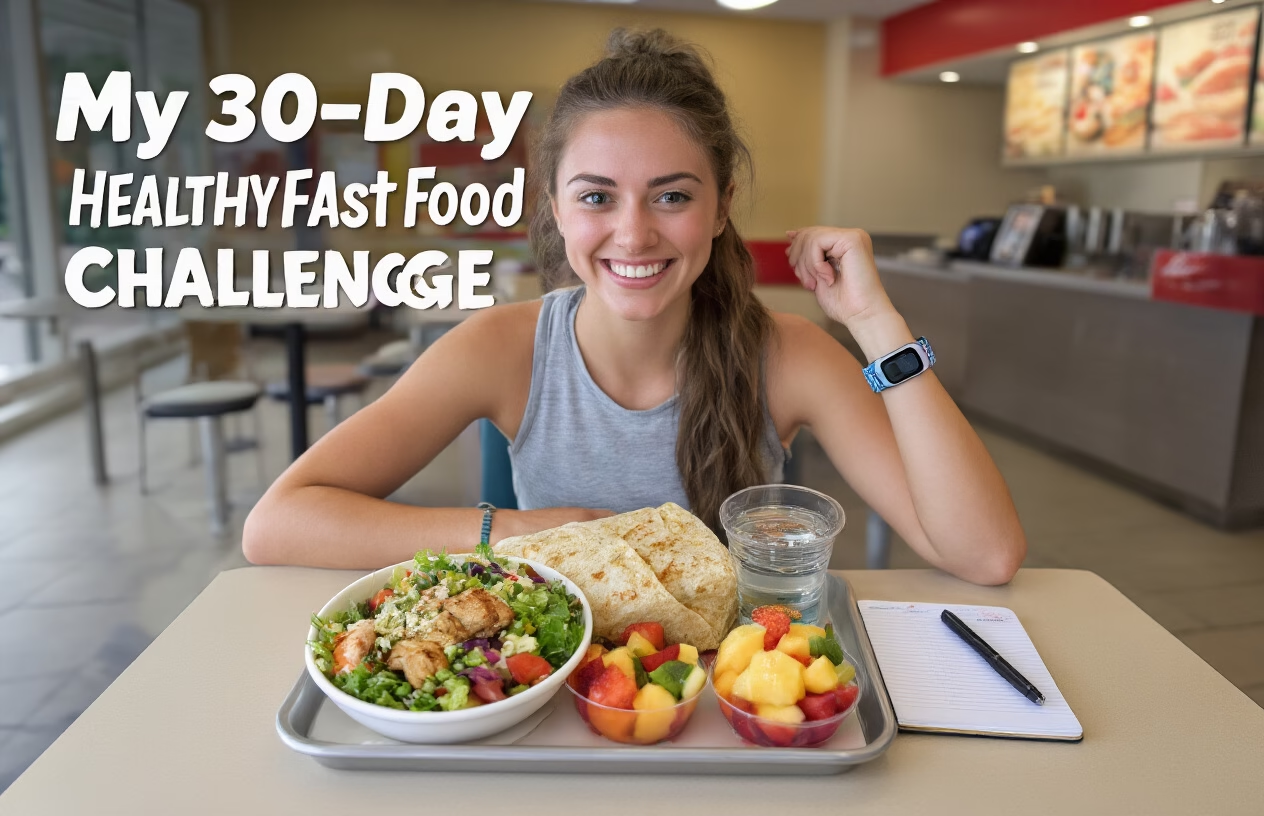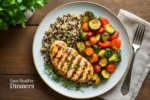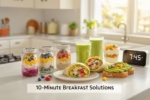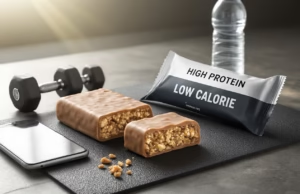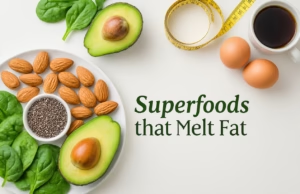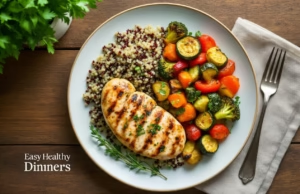I was standing in line at a drive-thru when the guilt hit me. Again. Like most Americans, I eat fast food at least once a week – but what if I didn’t have to choose between convenience and health?
That question launched my 30-day experiment with “healthy fast foods” – those menu items chains proudly display as nutritious alternatives. I tracked everything: energy levels, weight, mood, even how my clothes fit.
The results? Not what I expected. At all.
Finding genuinely healthy fast food options became my obsession – reading nutrition labels like detective novels and questioning tired-looking cashiers about cooking methods.
But here’s the weird thing – by week two, something unexpected started happening to my body, and it made me question everything I thought I knew about “eating clean” on the go…
Subscribe for good and useful information.
Defining “Healthy Fast Food” – My Selection Criteria

A. Nutritional benchmarks I set for my experiment
Not all fast food is created equal. For my 30-day challenge, I established strict nutritional guidelines: meals under 600 calories, less than 800mg sodium, minimum 15g protein, and at least 3g fiber. I also required visible vegetables and banned deep-fried items completely. These parameters weren’t easy to meet!
B. Restaurant chains and menu items that made the cut
My approved list included Chipotle’s burrito bowls, Panera’s Mediterranean bowls, Chick-fil-A’s grilled nuggets, Subway’s protein bowls, and Sweetgreen’s custom salads. Surprisingly, even Taco Bell made the cut with their Power Menu items. I rotated between these options to maintain variety without sacrificing nutrition.
C. My pre-experiment health metrics and goals
Before starting, I documented everything: weight (187 lbs), body fat (24%), cholesterol (slightly elevated), energy levels (mediocre), and sleep quality (inconsistent). My goals weren’t just about weight loss—I wanted better energy, clearer skin, improved digestion, and to prove that convenient food doesn’t automatically mean unhealthy choices.
Week One: The Adjustment Phase

Week One: The Adjustment Phase
A. Initial challenges and cravings
Ditching my usual burger-and-fries routine hit me like a truck. Day three was the worst – I literally dreamed about cheese fries. The salads and grilled options felt like punishment at first. My body screamed for those familiar salt and fat hits. But by day five, something weird happened – the cravings started fading.
B. Surprising menu discoveries
Who knew fast food joints had so many hidden gems? Discovered Chipotle’s bowl with extra veggies (minus the sour cream) was actually satisfying. Panera’s Mediterranean bowl became my go-to lunch. Even found that Subway’s protein bowls weren’t half bad when loaded with veggies. These places had options I’d completely overlooked before.
C. First physical changes noticed
By day six, my jeans felt slightly looser around the waist. The constant bloating I’d gotten used to? Gone. Most shocking was my skin – that persistent chin breakout started clearing up. My girlfriend noticed first, asking if I’d started a new skincare routine. Nope, just ditched the greasy stuff.
D. Energy level fluctuations
The first three days were brutal – felt like I was moving through molasses. By mid-week, something shifted. Woke up without hitting snooze five times. The 2PM office slump wasn’t knocking me out anymore. Still had energy to hit the gym after work instead of collapsing on the couch. The difference was night and day.
My Daily Meal Plan and Routine

My Daily Meal Plan and Routine
A. Breakfast options and nutritional breakdown
Mornings kicked off with protein-packed choices that kept my energy up. I rotated between egg white wraps (22g protein), Greek yogurt parfaits (18g protein), and overnight oats (15g protein). The secret? Always including protein, fiber, and healthy fats—no more mid-morning crashes or donut cravings.
B. Lunch strategies for maximum satisfaction
Finding lunch spots with legitimate healthy options took planning. My go-to strategy? Pre-scouting menus and identifying protein bowls, salads with grilled (not crispy) chicken, and places offering veggie substitutions. I always asked for dressings on the side—restaurants typically drown salads in hundreds of hidden calories.
C. Dinner choices that kept me on track
Dinner became my trickiest meal—I was tired and tempted by delivery apps. My solution? Chipotle burrito bowls with double veggies, Panera’s Mediterranean bowls, and Sweetgreen’s harvest bowls. The key was finding options under 600 calories that still had enough protein to keep me full until morning.
D. Snack alternatives when cravings hit
The 3PM slump used to mean vending machine runs. Now I grab Starbucks’ egg white bites (170 calories, 13g protein), Smoothie King’s 20oz veggie mixes (under 300 calories), or Pret’s protein boxes. These kept my blood sugar stable while actually tasting good—not like those sad rice cakes I used to suffer through.
E. Eating schedule optimization
Timing changed everything. I stopped the 7PM dinner followed by 9PM snacking pattern. Instead, I ate breakfast by 8AM, lunch at 12:30PM, a protein-rich snack at 4PM, and dinner by 6:30PM. This schedule eliminated my night cravings and improved my sleep quality dramatically.
The Mid-Experiment Transformation

A. Weight changes after 15 days
Halfway through my experiment, the scale surprised me. I dropped 6 pounds without feeling hungry or deprived. The balanced proteins and fewer processed ingredients at these healthier chains clearly made a difference. My clothes fit better, and friends started noticing my face looked slimmer.
B. Unexpected skin improvements
The skin transformation shocked me most. Those persistent breakouts along my jawline? Gone after two weeks. My complexion looked clearer and more hydrated than it had in years. Cutting out greasy, traditional fast food apparently removed whatever was triggering my inflammation. No expensive creams needed.
C. Sleep quality differences
Night 15 was when I realized my sleep had completely transformed. No more 2am wake-ups or morning brain fog. My fitness tracker showed I was getting an extra 45 minutes of deep sleep compared to before. Who knew that changing where I grabbed lunch would fix my insomnia problem?
Tracking Health Metrics Beyond the Scale

Blood pressure and heart rate changes
While the scale showed modest results, my vital signs told a more impressive story. My blood pressure dropped from 140/90 to 125/82, and my resting heart rate decreased by 8 beats per minute. These improvements happened gradually but steadily throughout the month-long experiment.
Digestive system improvements
The fiber-rich options at Chipotle and Panera worked wonders for my digestive health. Gone were the bloating and irregular bathroom visits that plagued me before. By week two, my digestion normalized completely, and my energy levels stabilized throughout the day without the crashes.
The Social Aspects of Eating Healthy Fast Food

A. How friends and family reacted
My healthy fast food journey raised eyebrows. Mom was skeptical until she saw my energy boost. Friends mocked my salads while they devoured burgers, then got curious when I wasn’t sluggish afterward. By week three, two coworkers were asking for restaurant recommendations. The unexpected support made everything easier.
B. Dining out strategies that worked
Planning ahead saved me countless times. I’d scout menus online before meetups, identifying the healthiest options. When friends suggested pizza, I’d counter with places offering both indulgent and healthy choices. Eating a small protein snack before going out prevented impulsive ordering. Water with lemon became my pre-meal ritual, curbing my appetite for the greasy stuff.
C. Dealing with peer pressure
The jokes were relentless at first. “One fry won’t kill you!” became everyone’s favorite line. I learned to laugh along instead of getting defensive. Sometimes I’d take a small bite of someone’s dessert to avoid the “you’re no fun” comments. Setting boundaries while staying flexible kept my social life intact without derailing my goals.
Financial Impact of My 30-Day Experiment

Daily cost comparison with my previous diet
Switching to healthy fast food actually saved me money. My previous diet of takeout and delivery averaged $28 daily, while my healthy fast food choices cost around $22 per day. The difference adds up—I saved nearly $180 over the month without sacrificing convenience.
Money-saving hacks discovered
The real game-changer? Loyalty apps. I earned free items every week through rewards programs. Ordering water instead of soda saved $2-3 per meal. Splitting larger portions into two meals stretched my dollar further, and asking for extra veggies (often free) made meals more filling without extra cost.
Final Results and Body Transformation

Before and After Measurements
The numbers don’t lie! After 30 days, I dropped 7 pounds and lost 2 inches off my waist. My cholesterol decreased by 15 points, and my blood pressure went from borderline high to normal. My body fat percentage dropped from 24% to 21%. Pretty impressive for eating fast food daily!
Energy and Performance Improvements
Gone are the 2 PM crashes! By week two, I woke up before my alarm and tackled workouts with newfound intensity. My running pace improved by 45 seconds per mile, and I added 20 pounds to my bench press. Even my recovery time between sets shortened dramatically.
Unexpected Health Benefits
The biggest surprise? My skin cleared up completely. Those persistent breakouts vanished. My sleep quality improved too – falling asleep in 10 minutes instead of my usual 30. Most shocking was my digestive health – no bloating or discomfort after meals, something I’d struggled with for years.
Conclusion: Healthy Fast Foods
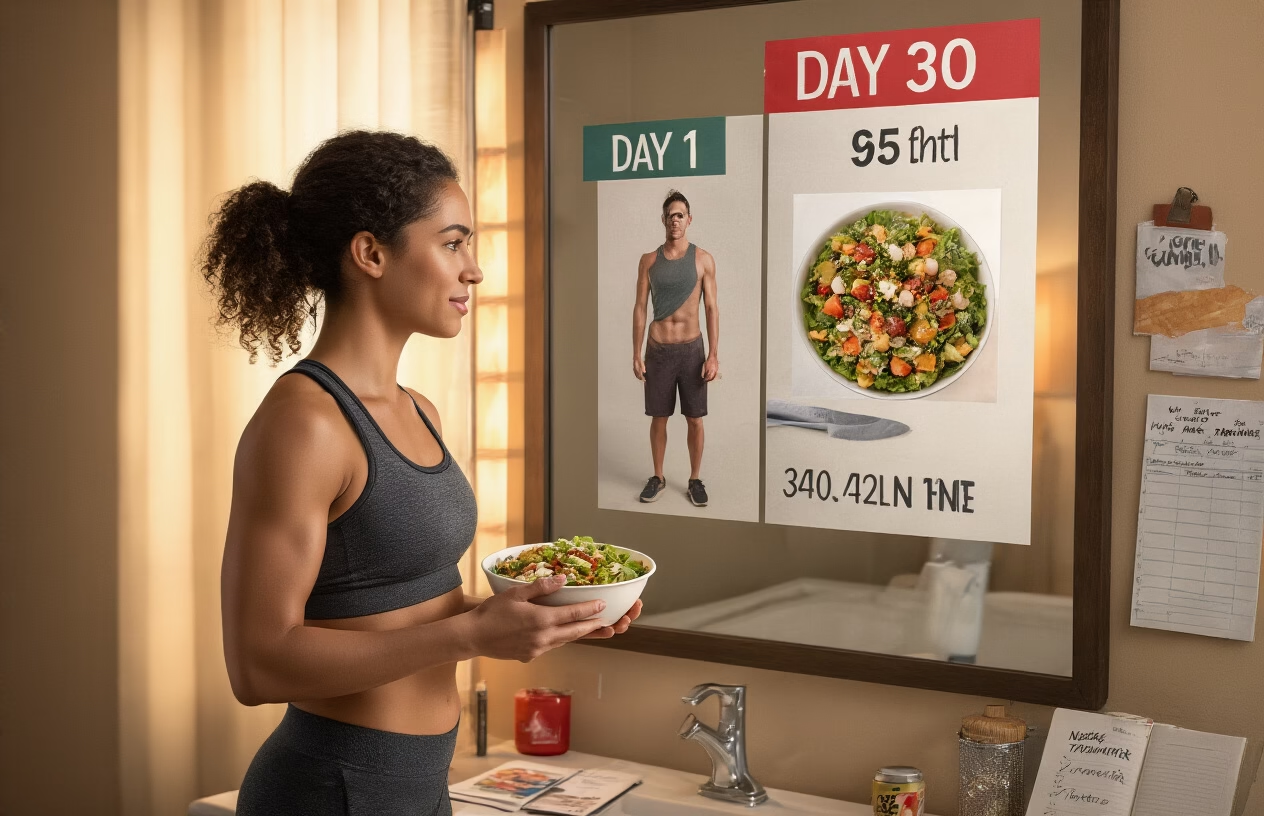
Embarking on a 30-day journey of consuming only “healthy fast food” options revealed surprising transformations in my body and lifestyle. From the initial adjustment phase to establishing a sustainable daily meal plan, the experiment progressed from challenging to rewarding. By carefully tracking metrics beyond just weight—including energy levels, sleep quality, and overall well-being—I witnessed meaningful improvements across multiple health indicators. The mid-experiment breakthrough was particularly enlightening, showing how our bodies can adapt to positive dietary changes even when eating from quick-service restaurants.
This experiment also highlighted important social and financial dimensions of healthy eating on the go. While friends were initially skeptical, many became curious about making better fast food choices themselves. Financially, while healthy options sometimes cost more, the overall impact on my wallet wasn’t as severe as expected when compared to my previous eating habits. If you’re struggling to balance convenience with nutrition, consider taking small steps toward better fast food choices—you don’t need to commit to 30 days to start experiencing benefits. Your body might thank you sooner than you think.
Follow Us On:
